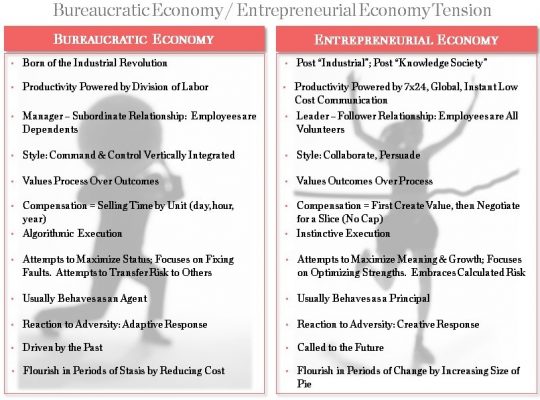It’s been twenty years since, in 1994, Bigelow plugged into the World Wide. Whoa, tell me that wasn’t hard?
By 1996, my clients/friends were laughing like hell at me because, after seeing how access to the internet was changing their businesses, I began to repeatedly (tediously?) say to them: “The internet is not a big thing. The internet is not a big thing. I’m telling you– the internet is not a big thing. The internet is the ONLY thing”.
But in many ways, the intervening twenty years have been a marvel, and in some ways, a little disappointing, haven’t they. A marvel because today five billion people in the world have cell phones and two billion have smartphones, enabling access to 24 X 7 global and essentially low cost mobile communication. This number is up from almost zero (a trivial number) in 1993.
Disappointing perhaps because the first twenty years have been a struggle with technology, haven’t they? It’s been way too hard with a lot of effort spent on the wrong stuff. Much as I imagine it must have been for the early pioneers in horseless carriages. For them — crank start, spark advance, no availability of petrol, countless flat tires, no traffic laws, interference with horses… and on and on. For us, remember dial-up modems? Remember the hieroglyphics of the Listservs? How about Mosaic or Netscape? The constant discarding of technology just learned and learning new technology developed by IT nerds who seemed to be more fascinated by the technology than getting stuff done? How about dragging all that wiring through your office and home ceilings just before wi-fi?
Lots and lots of friction. Most of us aren’t (and never were) interested in the speeds of the modem handshake. We are just trying to get stuff done. To create, communicate, share, complete, close, publish, ship, close, collect, develop, listen, share, collaborate.
Disappointing too perhaps because it seems like increased productivity, defined as increased output per person per hour (or day or whatever time unit you like), came S-L-O-W-L-Y. The bureaucratic institutions that “got us here” looked dated, and they resisted technological change. Mightily. Our intuition was shouting at us that adopting new ways of connectedness was in the long run going to be good for us…but in the short run naturally disruptive to some.
It took a short, domain-specific, but relatively jarring 18 month recession from December 2007 to June 2009 to sober us up—that we cannot invest in all this new technology, connectedness, communication, AND drag along all of our quaint, comfortable, dated bureaucratic habits. So what happened? In the temporary emotional crisis of a recession, headcounts were reduced. Soon, output increased. Productivity increased back to where it was before the recession, and then shot up. Output increased but headcount didn’t. The general media fed us the unemployment story…and missed the bigger point. An increase in output coupled with a decrease in employment (the labor hours required to produce the output) = Productivity increase.
Look, if you are one of the ones laid off or having a hard time being fully employed, it’s a tragedy—for you, your family, and it likely negatively affects everyone around you. Structural dislocation sucks. But in general and in the aggregate, in the long term, if productivity increases, it increases our world wide quality of life.
And the bureaucratic organizations that led the way since the 1940s were invested in what got them here—not what will take us there—and their leaders behaved badly and the organizations performed poorly. They let us down. Whether it was General Motors, IBM, or the Veterans Administration, the only leadership toward the future is by entrepreneurial organizations—perhaps it always is.
So, we circle back to the first twenty years of the WWW. Sure I was jeered at for saying the internet “wasn’t a big thing, it was the only thing”. Well, after returning from this year’s TED2014 Conference in Vancouver, and absorbing what Astro Teller from Google calls “the Internet of Things”, and what Jeff Immelt of GE calls “the industrial internet,” I will put another stake in the ground.
It’s just the tip of the iceberg. If you think the last twenty years of globally increased connection, engagement, communication (and potential productivity) were amazing—well, in the words of Canadian singer songwriter Randy Bachman, “You Ain’t Seen Nothin’ Yet.”
© 2024 Bigelow LLC. All rights reserved.

